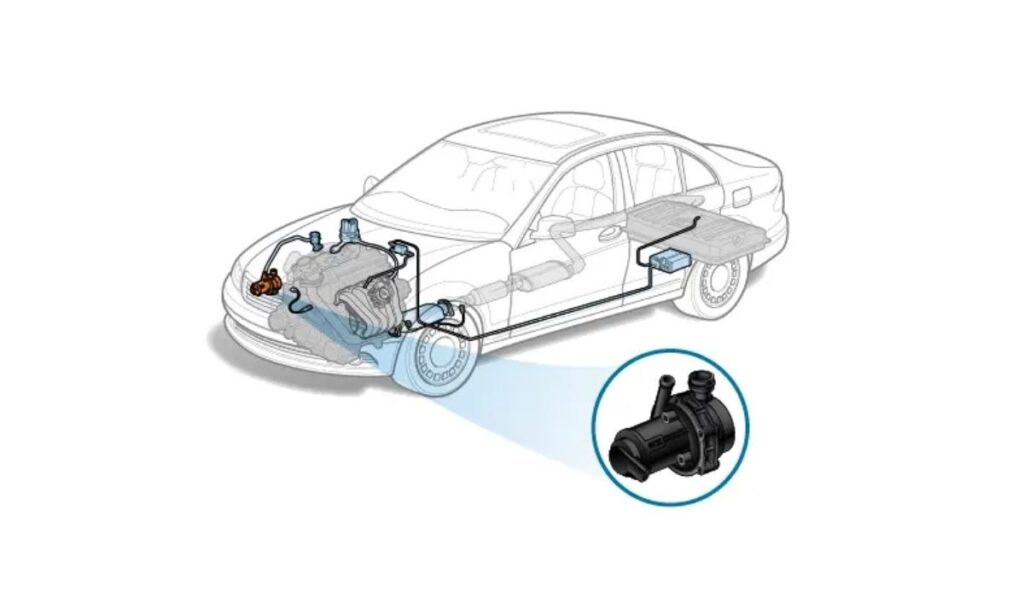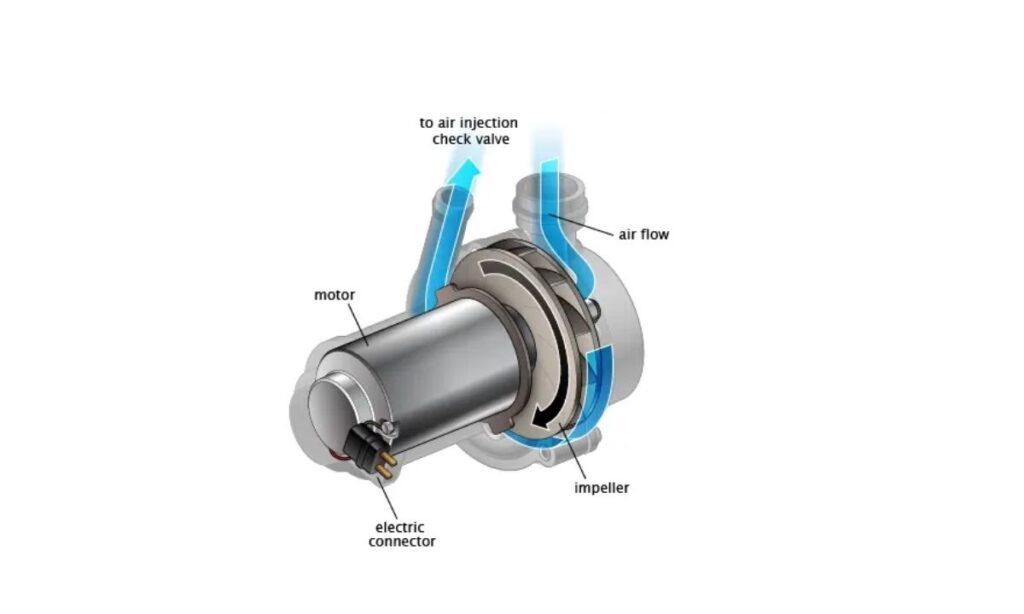The air pump, often referred to as a smog pump or secondary air injection pump, is a vital component of your car’s emission control system. This system plays a crucial role in minimizing harmful pollutants released into the atmosphere, ensuring your vehicle runs efficiently, and complying with environmental regulations. For these reasons, your air pump needs to be in optimal operating condition at all times.
A Brief History and Evolving Role of the Air Pump
The air pump first appeared in cars in the mid-1960s, during the nascent stages of emissions regulation. Its initial purpose was to inject additional air into the exhaust stream immediately after the fuel-air mixture was burned in the engine’s cylinders. In those early days, most cars used carburetors, which were far less precise than modern fuel injection systems, often resulting in a significant amount of unburned gasoline in the exhaust gases. By introducing more air, the air pump helped this unburned gasoline ignite before exiting the tailpipe, thereby greatly reducing smog-forming emissions.
As automotive technology advanced with widespread fuel injection, the introduction of catalytic converters, and sophisticated computer controls for engines, the amount of unburned fuel in exhaust gas decreased dramatically. The air pump’s role evolved but remained important: it now primarily assists the catalytic converter in warming up quickly when cold (a critical phase for emissions control) and provides additional air when needed for the optimal performance of the catalyst during various driving conditions.
Air pumps can be powered in one of two ways: they can be electrically operated or driven by a belt connected to the engine.

Symptoms of a Bad Air Pump
A malfunctioning air pump can be a serious issue, impacting not only your car’s environmental compliance but also its performance and safety. Here are the key warning signs:
- Check Engine Light (CEL) Illumination:
- This is often the first and most common indicator. Because the air pump is an integral part of the emissions system, a fault with it will almost certainly trigger the Check Engine Light on your dashboard.
- The vehicle’s onboard diagnostic (OBD-II) system will store specific trouble codes (e.g., P0410 for “Secondary Air Injection System Malfunction”) that a mechanic can retrieve to help pinpoint the problem.
- Vehicle Fails Emissions Inspection (Smog Test):
- Since the air pump directly influences your car’s tailpipe emissions, its failure will likely cause your vehicle to fail a mandatory emissions inspection or smog test. This is particularly true for older vehicles or during the cold start portion of testing on newer ones.
- Engine Runs Rough, Stalls, Hesitates, or Idles Too Low:
- While primarily an emissions component, a faulty air pump can sometimes affect engine performance. If the air pump is stuck on or off, or if it causes vacuum leaks, it can throw off the engine’s air-fuel mixture or overall combustion process. This might lead to:
- Rough idling: The engine shakes or vibrates more than usual when stationary.
- Stalling: The engine unexpectedly shuts off, especially at low speeds or when coming to a stop.
- Hesitation: A delay or stumble in acceleration when you press the gas pedal.
- Low idle speed: The engine idles below its normal RPM range.
- While primarily an emissions component, a faulty air pump can sometimes affect engine performance. If the air pump is stuck on or off, or if it causes vacuum leaks, it can throw off the engine’s air-fuel mixture or overall combustion process. This might lead to:
- Reduced Engine Power, Poor Acceleration:
- In some cases, a problem with the air pump or related emission control components can cause the engine’s computer to enter a “limp-home” mode or simply reduce power output to protect other systems. This can result in a noticeable decrease in overall engine power and poor acceleration, making the car feel sluggish.
- Strange Howling, Whining, or Grinding Noise:
- If the air pump is belt-driven, a failing internal bearing can produce a loud howling or whining noise that changes with engine RPM.
- For electrically operated pumps, you might hear a grinding or rattling sound if the internal components are failing. These noises often originate from the area of the air pump itself.

Advice for Repairing a Bad Air Pump
While failing a smog test is a significant consequence, the potential for reduced engine performance and drivability to compromise your driving safety is the more serious concern with a bad air pump.
- Professional Diagnostic Inspection is Essential:
- Your mechanic will begin with a thorough inspection of the air pump unit itself, along with any connected belts, hoses, and vacuum lines.
- If the Check Engine Light is illuminated, a diagnostic scan tool is indispensable. Retrieving the specific trouble codes (DTCs) stored in the vehicle’s computer can pinpoint the general area of the problem within the emissions system. However, a code is just the starting point; further testing is often required to confirm the exact faulty component.
- Replacing the Air Pump and Related Components:
- If diagnostics confirm a faulty air pump, the defective unit will be carefully removed from your vehicle and replaced with a new or remanufactured air pump.
- Based on their condition, your mechanic will likely recommend replacing related belts and hoses (especially for belt-driven pumps) at the same time. These components are often disturbed during the repair and can be prone to wear themselves, so replacing them proactively saves you from potential future breakdowns and additional labor costs.
- Post-Repair Verification:
- Once the new air pump and any related components are installed, the mechanic will clear the stored trouble codes from the vehicle’s computer. A subsequent scan with the diagnostic tool (and often a test drive) will then verify that the problem has been solved and that the emission system is functioning correctly, allowing the vehicle to pass future emissions tests.
Conclusion
Repairing a bad air pump can be far trickier than it seems. The emission control system is highly complex, relying on intricate interactions between various computer-controlled and monitored components. A thorough understanding of how these systems integrate, coupled with a deep knowledge of advanced scan tool diagnostics, is absolutely necessary to accurately pinpoint the precise cause of an emissions-related problem. A trouble code, while helpful, is just the beginning of the diagnostic journey.
Don’t fall down the “rabbit hole” of trial-and-error repairs. If you replace the air pump and the Check Engine Light comes back on, do you have a clear understanding of your next steps? If not, attempting this repair yourself can lead to frustration, wasted money on unnecessary parts, and potentially even damage to other sensitive emission components.
For accurate, safe, and cost-effective repair of your air pump and any emissions system issues, leave it to the professionals! Your certified mechanic has the specialized experience, proper tools, and advanced diagnostic equipment to ensure your vehicle is running efficiently, passes emissions tests, and most importantly, is safe to drive.
